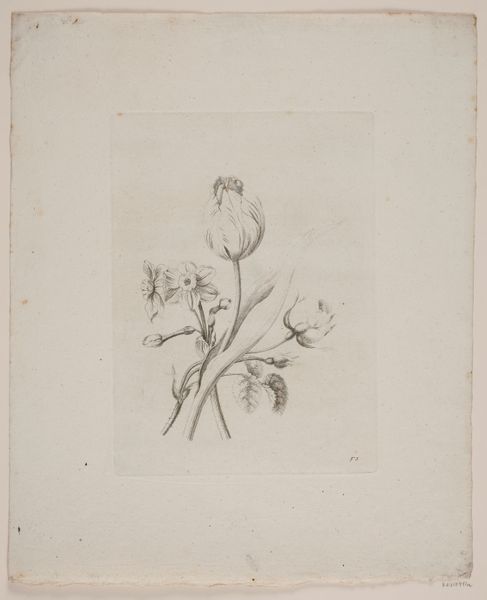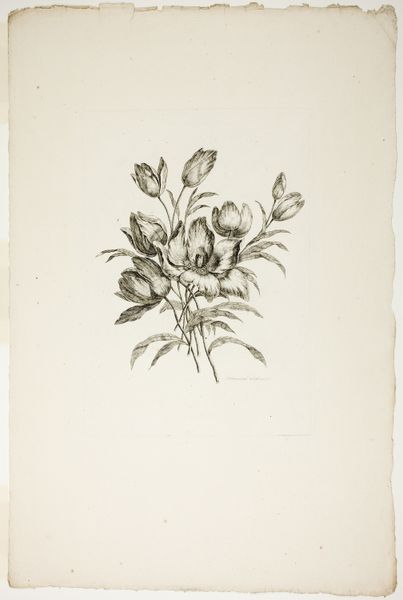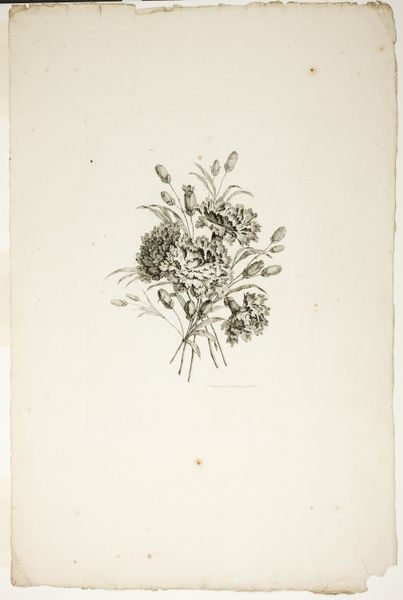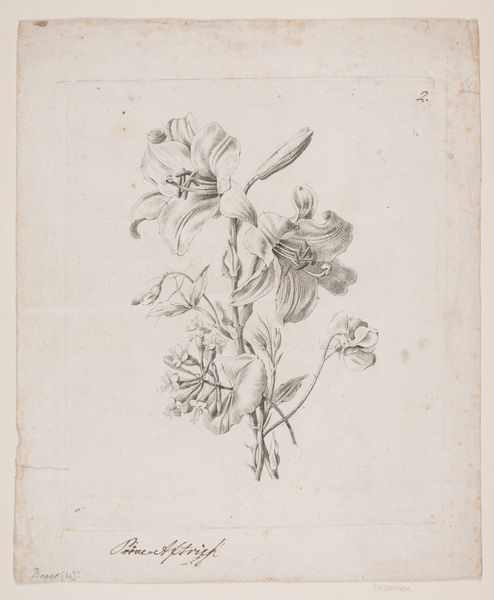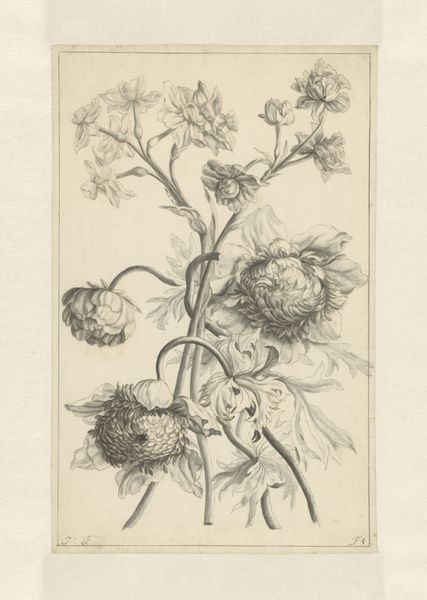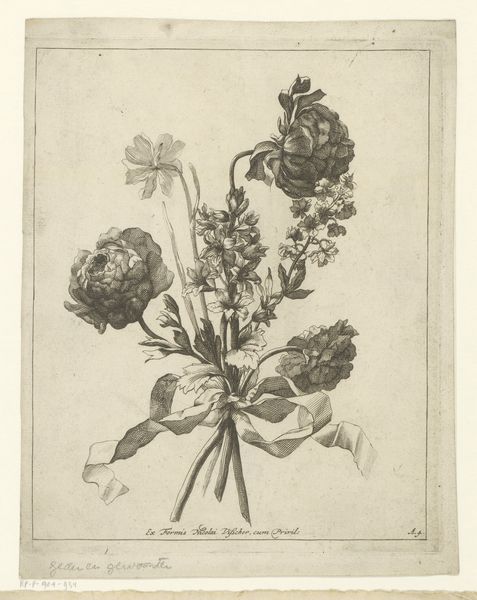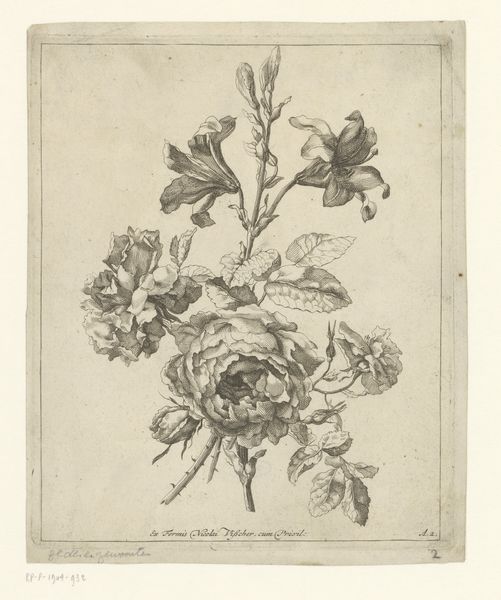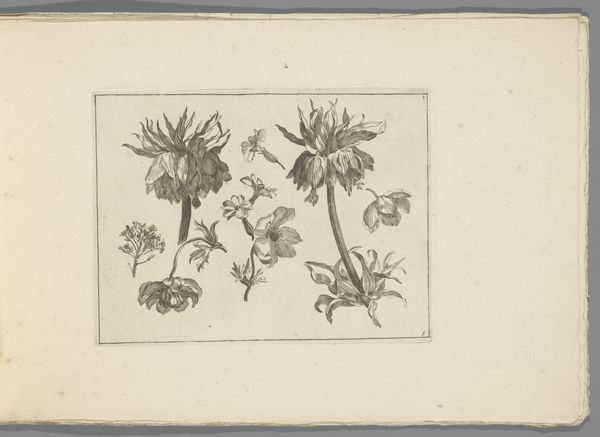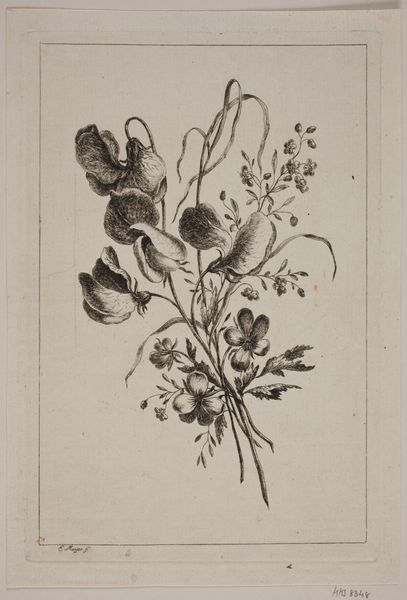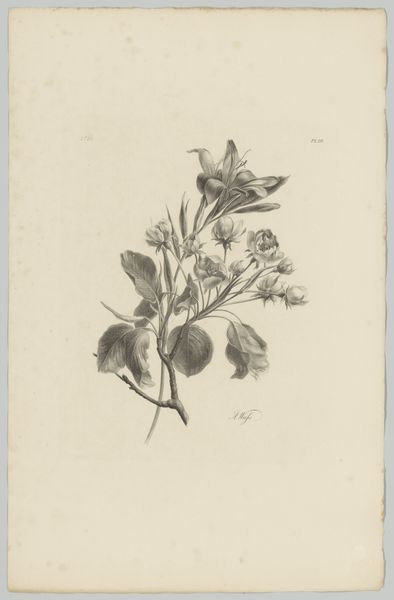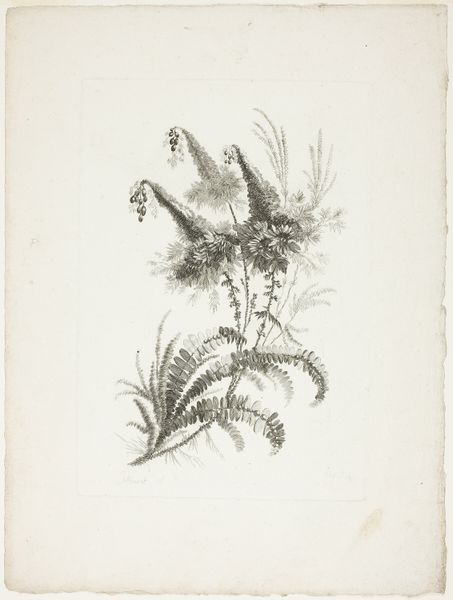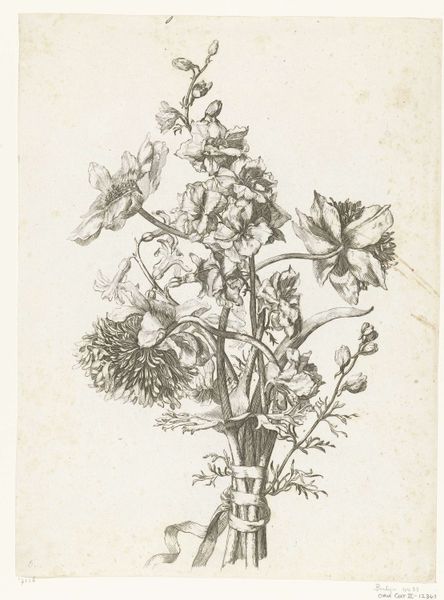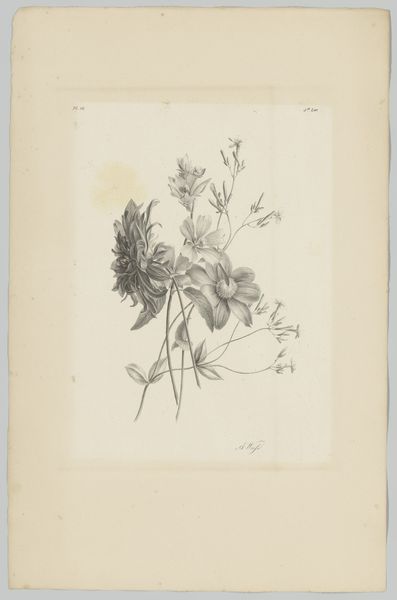
Bouquet, from Collection of New Flowers of Taste for the Manufacture of Persian Cloth, Invented and Drawn by Jean Pillement 1765 - 1770
0:00
0:00
drawing, print, etching, paper, ink
#
drawing
# print
#
pen sketch
#
etching
#
pencil sketch
#
landscape
#
paper
#
ink
#
rococo
Dimensions: 248 × 167 mm (plate); 357 × 261 mm (sheet)
Copyright: Public Domain
Curator: So, here we have Jean Pillement’s "Bouquet, from Collection of New Flowers of Taste for the Manufacture of Persian Cloth," created around 1765-1770, using etching and ink on paper. Editor: It’s incredibly delicate! The detail in each petal and leaf is striking. I’m immediately drawn to the intricate craftsmanship, like how the textures of the flowers almost mimic lace. What’s your read on this, beyond its beauty? Curator: Beyond the immediate visual appeal, I'm interested in its function as a design for Persian cloth. Think about the labor involved: the drawing, the etching, then the translation of this design into woven fabric. The materials – ink, paper, the etching plate itself – they’re all part of a complex process tied to production and consumption. Editor: That's fascinating! So it’s not just a pretty picture; it's a blueprint for a commodity. Were these designs highly valued? Curator: Absolutely. Consider the market for luxury goods in the 18th century and the demand for elaborate textiles. Pillement's drawings bridged the gap between artistic invention and the material world of manufacturing. The "taste" mentioned in the title is telling, highlighting how design shaped desires. How does seeing it as a commercial design rather than 'high art' shift your perception? Editor: It makes me consider the artisans who would have interpreted this design into fabric. They weren't just replicating; they were collaborating, in a way, with Pillement across different materials and skills. Does this elevation of a design elevate craft as a whole? Curator: Precisely! It challenges traditional hierarchies. By focusing on process and application, we recognize the value inherent in the making. What started as a drawing ends up materially transforming our environment. Editor: I never considered the labor and the larger economic forces that went into producing a design like this! Thank you for illuminating it, literally and figuratively. Curator: My pleasure. Hopefully you’ll see every piece of fabric you look at as more than it seems!
Comments
No comments
Be the first to comment and join the conversation on the ultimate creative platform.
